Notes: Warrington Wilderspool was the temporary western terminus of the Warrington & Stockport Railway (W&S) when it opened on 1 November 1853. The W&S line was authorised on 3 July 1851 as a line of the Warrington and Altrincham Railway (W&A) which would run from a connection with the Manchester South Junction & Altrincham Railway (MSJAR) at Timperley Junction to Warrington. At Warrington the W&A was authorised to make an end-on connection with the SHC&RC Garston and Warrington line and would connect to the London & North Western Railway (LNWR) and the Birkenhead Joint Railway (BJR) at Walton Junction. On 4 August 1853 the W&A changed its name to the W&S.
 |
Wilderspool station was on the east bank of the River Mersey, in Cheshire; the town of Warrington was on the other bank in what was, at that time, Lancashire. The temporary station was required because the bridge over the Mersey was incomplete in November 1853. The station was east of Wilderspool Causeway level crossing. Maps from the mid 1850s show that the station’s single platform was south of the line. Although the railway was double-track, the single platform would have been adequate at the time of opening as the eastern terminus was at Broadheath, which was nowhere near Stockport and was not very close to the centre of Altrincham; indeed, a contemporary comment was that the W&S went from ‘nowhere to nowhere’.
The intention of the W&S was not to operate an isolated line but to create a route from Warrington to Manchester via the MSJAR railway. In doing so the SHC&RC would reach Manchester from Garston and the BJR would have a link to the city from its network. The problem was that the MSJAR was under joint ownership of the London & North Western Railway (LNWR) and the Manchester, Sheffield & Lincolnshire Railway (MS&LR). The LNWR was hostile to the idea of trains running between the BJR and the SHC&RC lines and Manchester as they saw this as creating new routes that would compete with its own. For that reason the LNWR obstructed the W&S, placing it in a precarious financial position.
A bridge over the Mersey was completed in the early months of 1854, and the W&S opened to Warrington Arpley station, where its headquarters were located, on 1 May 1854. On the same day the line was also extended to Timperley Junction where it connected to the MSJAR. With the opening of Warrington Arpley the simple facilities at Wilderspool closed.
The W&S did manage to gain access to Manchester for its trains on 31 October 1854, but it fell victim to the railway wars of the late 1850s and was taken over by the LNWR on 1 January 1861 (having been leased by them from 13 August 1859).
When the LNWR built a new station at Warrington Bank Quay, which served both the former Garston & Warrington and the main line between London and Scotland, an indirect result was the brief reopening of Warrington Wilderspool from 16 November 1868. Arpley was only a short distance east of Bank Quay was only, so the LNWR closed it; in an attempt to placate the local anger at this closure the LNWR stopped trains at Wilderspool instead. The plan did not work as Wilderspool was poorly sited to serve central Warrington, so the LNWR reluctantly reopened Arpley on 2 October 1871 and closed Wilderspool.
Under the LNWR the line through Warrington Wilderspool became a secondary passenger route but a very important freight artery. In 1893, at the site of Wilderspool station, a junction was installed where a deviation line was built to carry the route at higher elevation over the Manchester Ship Canal, then under construction. A footbridge was also provided east of the crossing for pedestrians to use when the gates were closed to allow trains to pass.
An elevated signal box standing above the up line (Manchester direction) was provided to control the junction and the level crossing. An interesting feature of this crossing in the early twentieth century was semaphore signals on the road which controlled tram movements along Wilderspool Causeway.
Wilderspool Causeway was a major thoroughfare connecting to a road bridge that spanned the River Mersey. Being a very busy freight artery the railway caused a great deal of congestion to road traffic. In the early 1950s plans were drawn up to replace the level crossing with a bridge. Work began in the mid 1950s and the new bridge opened on 16 May 1957.
Regular passenger services continued through the site of Wilderspool station until 8 September 1962 when they were withdrawn between Ditton Junction and Broadheath and all of the remaining stations (except for the Warrington Bank Quay low level platforms) closed to passengers. After that date only a Liverpool to York night service and summer Saturday Sheffield and North Wales services passed through the station site. These services had ceased by the end of 1965 leaving only the occasional passenger diversion.
On 7 July 1985 the former W&S railway between Latchford and Skelton Junction closed because a bridge over the Manchester Ship Canal (opened in 1893) needed significant repairs. The line had 60 booked trains per day but British Rail considered that they could be diverted along other routes. However an effect of the closure was that trains from the main line had to run to Latchford and then reverse to continue west; the same was true for trains from the west en route to the main line; this applied to the Fiddlers Ferry traffic. Because of the need for these activities the Warrington Wilderspool station site remained a very busy place into the 21st century.
Route map by Alan Young.
Sources:
- Encyclopaedia of British Railway Companies - Christopher Awdry - Guild Publishing 1990
- The Manchester South Junction & Altrincham Railway - Frank Dixon - The Oakwood Press 1994
- The St Helens Railway, Its Rivals and Successors – J M Tolston – The Oakwood Press 1982.
To see stations on the Warrington and Stockport railway click on the station name: Warrington Arpley, Latchford (1st), Latchford (2nd), Thelwall, Lymm,
Heatley &
Warburton, Dunham Massey & Broadheath.
See also the stations on the Garston and Warrington railway: Garston Dock,
Speke, Halebank, Ditton, Ditton Mill, Widnes (1st), Widnes South, Cuerdley, Fidlers
Ferry & Penketh, Sankey
Bridges &
Warrington
Bank Quay Low Level. |

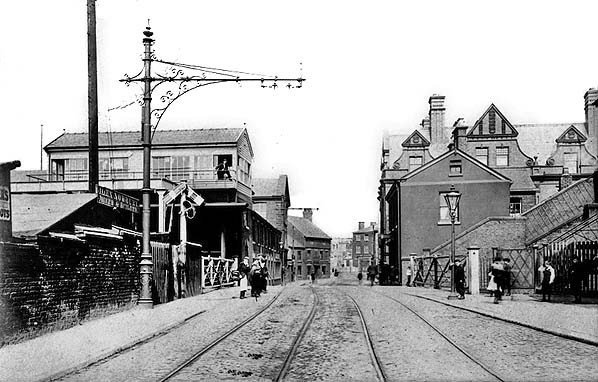
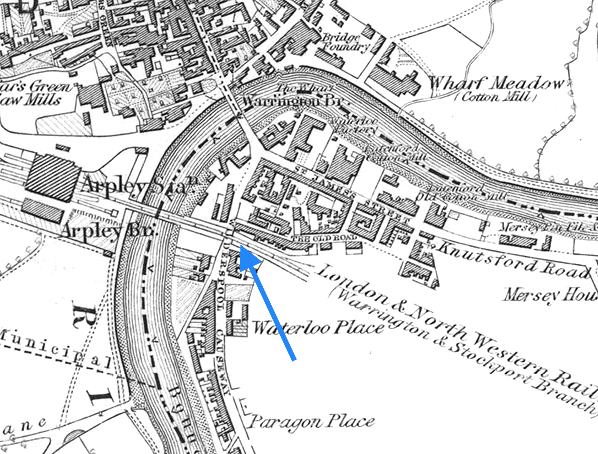
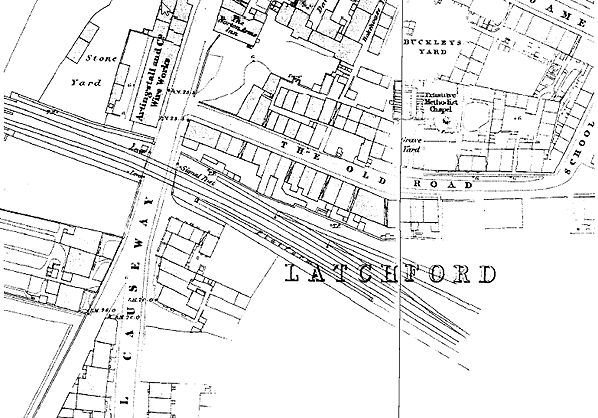
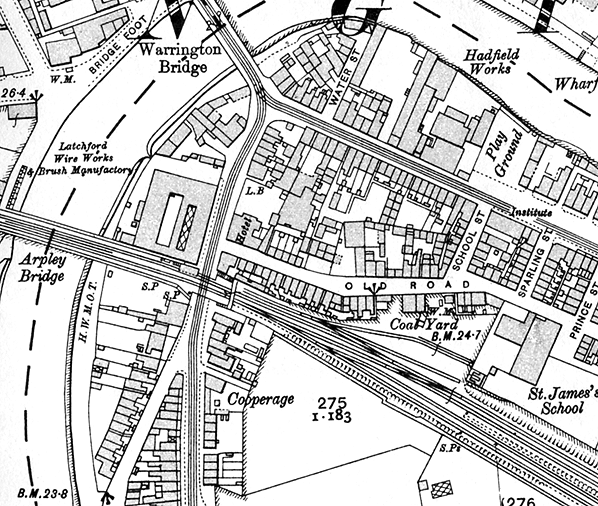
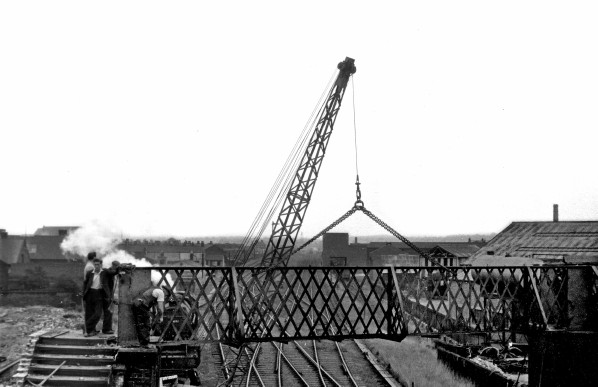
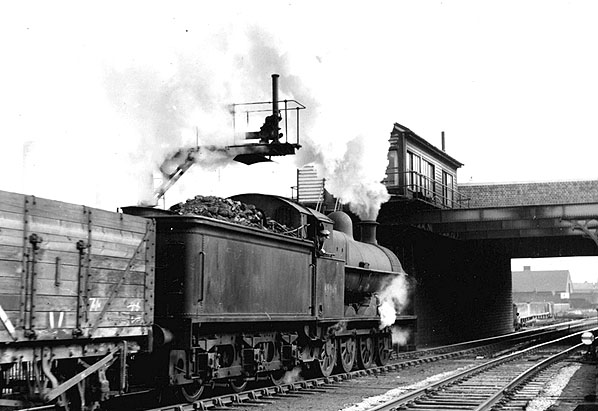
.jpg)
.jpg)
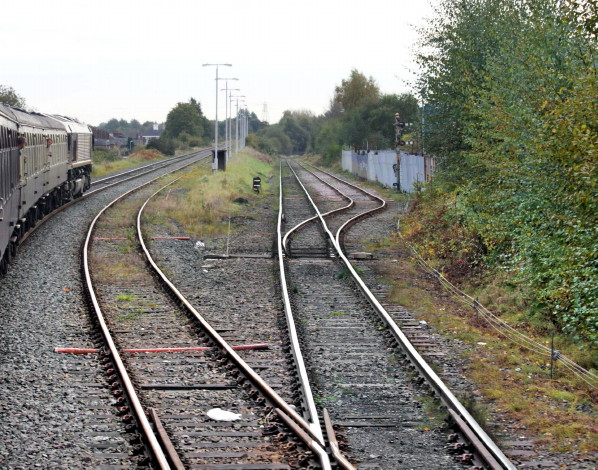 A view looking east at the site of Warrington Wilderspool station on 20 October 2012. The course of the original Warrington & Stockport Railway is marked by the lines to the right.
A view looking east at the site of Warrington Wilderspool station on 20 October 2012. The course of the original Warrington & Stockport Railway is marked by the lines to the right. 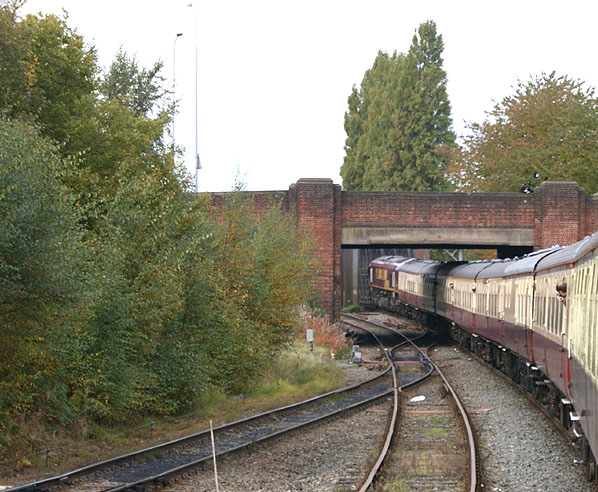


 Home Page
Home Page